The 2021 Alpine Trail E is Marin’s first foray into the full-sus electric mountain bike world, featuring an all-alloy construction, Shimano EP8 motor, 630Wh battery and aggressive descent-focused geometry.
- Marin’s first full-sus ebike goes big with EP8 motor and hardcore geometry
- Marin updates its Hawk Hill trail bike for 2021
The Californian brand has looked to strike a good balance between performance and price – fitting top-spec parts in crucial areas, such as the GRIP2 damper in the Fox 38 fork and plenty of branded finishing kit, for this model's £5,695 / $5,999 / €6,199 price tag.
Marin Alpine Trail E2 frame and suspension details
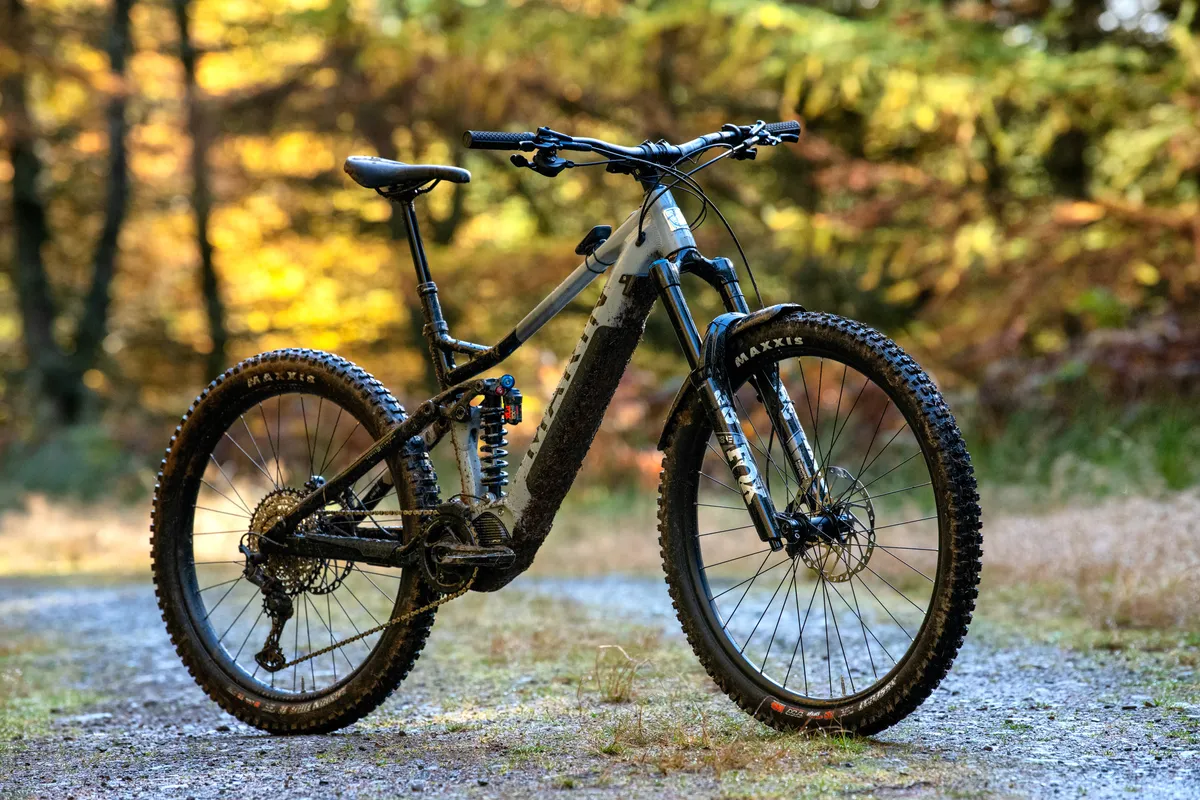
The Alpine Trail E2’s shape is familiar, looking similar to a lot of the brand’s other full-sus bikes and shares the same Series 4 aluminium seen on the standard Alpine Trail.
It’s got internally routed cables and a 148mm Boost rear dropout, while there’s space for a bottle inside the front triangle.
There are fork bumpers on the down tube, to stop the forks rotating too far and damaging the down tube, and an integrated chainstay chainslap protector.
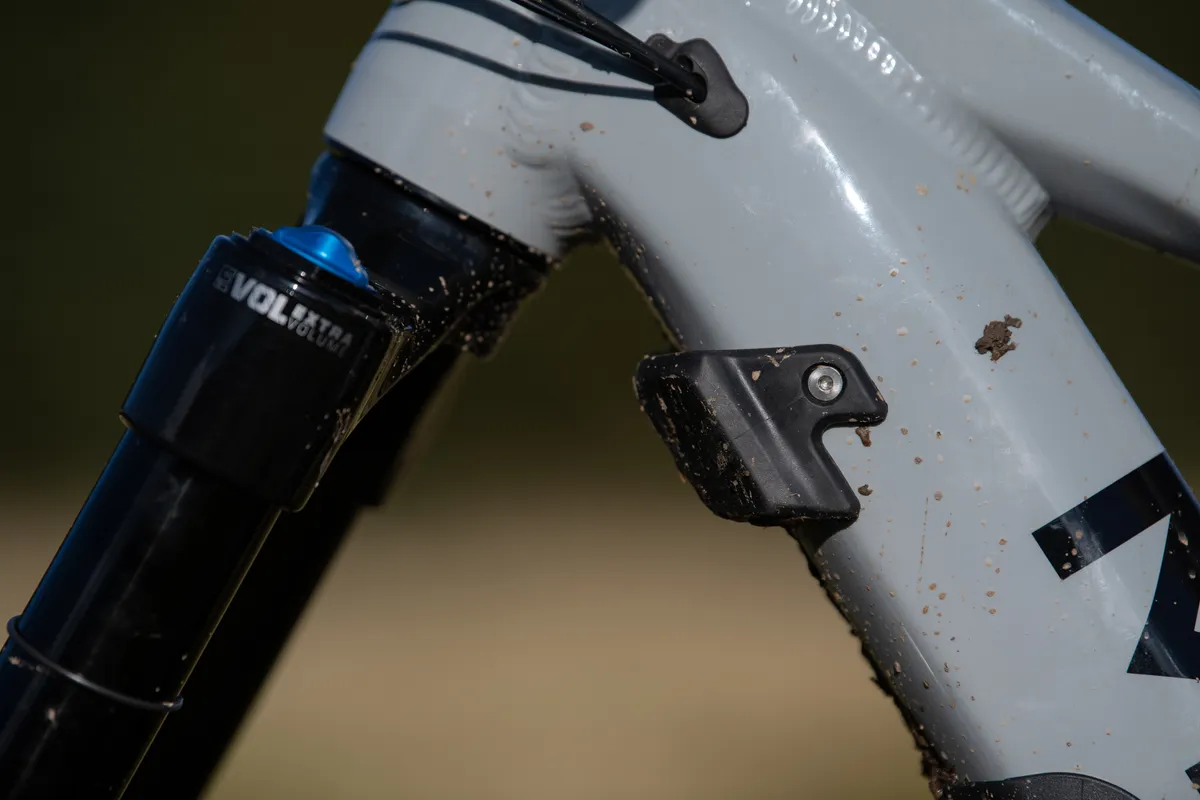
It uses Marin’s MultiTrac suspension system, which is a linkage-driven single-pivot design with 150mm of rear wheel travel.
Hidden inside the chunky down tube is Shimano’s 630Wh battery that’s removable for off-bike charging. It is connected to the STEPS EP8 motor with 250W of peak power and 85Nm of peak torque.
The on/off button is located on the top of the top tube and there’s a charging port on the non-driveside near the motor.
Marin Alpine Trail E2 geometry
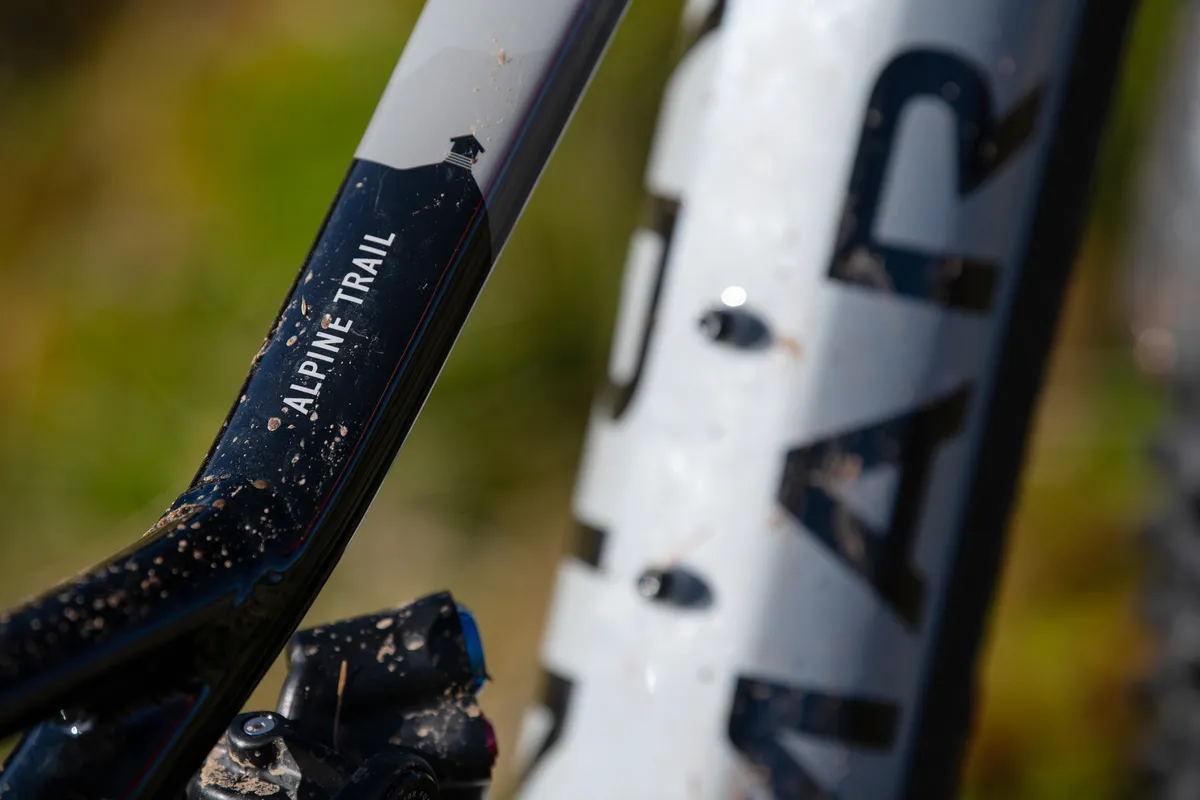
Built around mullet wheel sizes (where the front wheel is 29in in diameter, the rear 27.5in), the Alpine Trail E2 has a 63-degree head-tube angle, a 78-degree effective seat-tube angle and the size large I tested features a 485mm reach, slotting it firmly into the modern geometry category.
Elsewhere it has a 1,264mm wheelbase and 435mm chainstays, with a low 686.8mm standover height and short 425mm seat-tube length.
These numbers should equate to a bike with an insatiable appetite for the descents – thanks to the reach, wheelbase and head tube figures – while offering plenty of comfort on the ascents thanks to its steep seat-tube angle placing your hips central on the bike over the pedal cranks.
Marin Alpine Trail E2 specifications
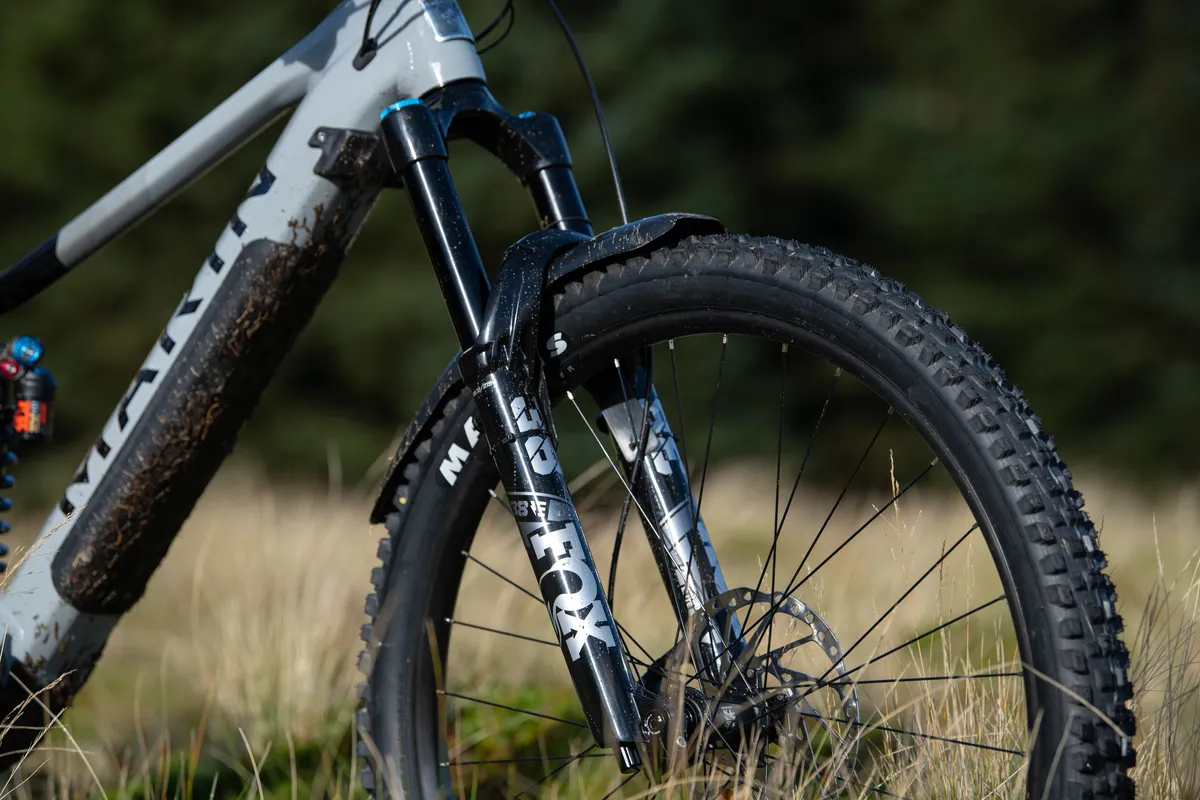
Marin’s been nifty with its spec choices, electing to fit a Fox 38 with the top-performing GRIP2 damper, but foregoing the Kashima stanchions.
Like wise, it's specced a Fox DHX2 rear shock with just low-speed compression and rebound external adjustment, again to save some cash without compromising on performance.
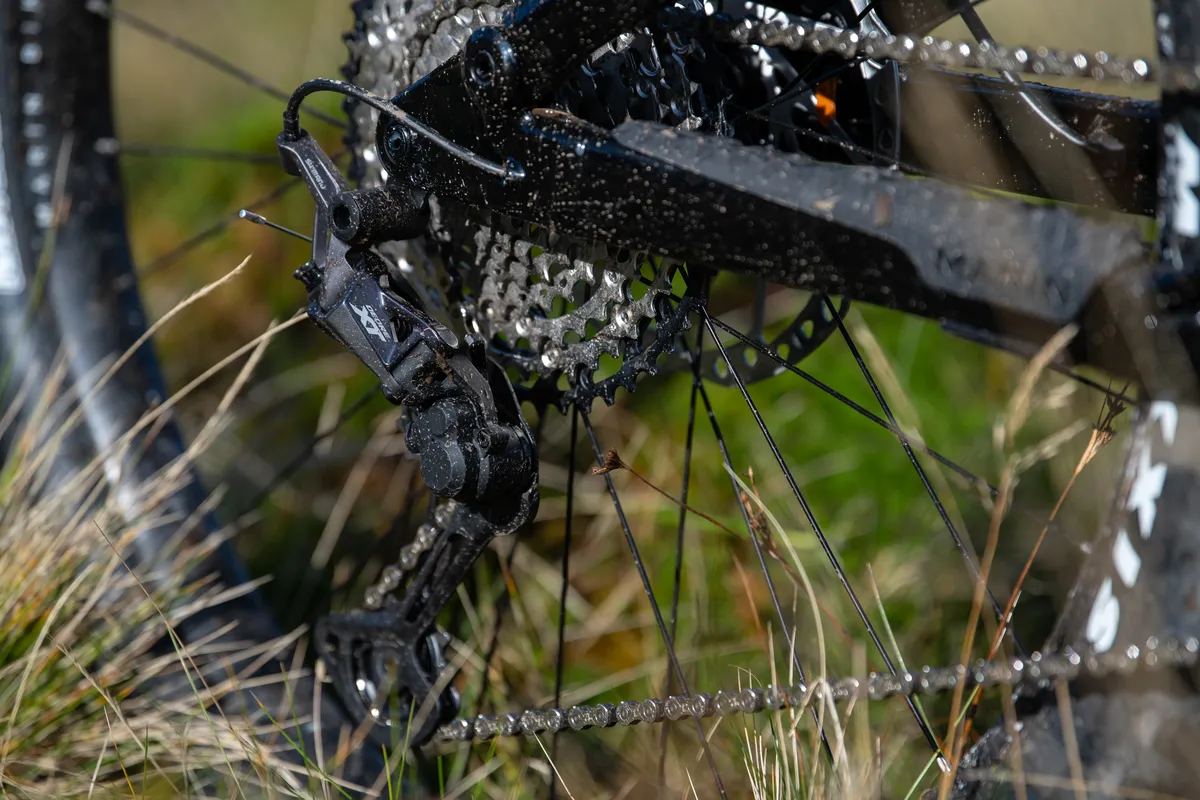
Elsewhere, the drivetrain is a mash-up of Shimano’s XT and SLX 12-speed, while a Deity bar and stem feature along with an X-Fusion Manic dropper and Maxxis rubber. My size large without pedals weighed 23.3kg.
Marin Alpine Trail E2 ride impressions
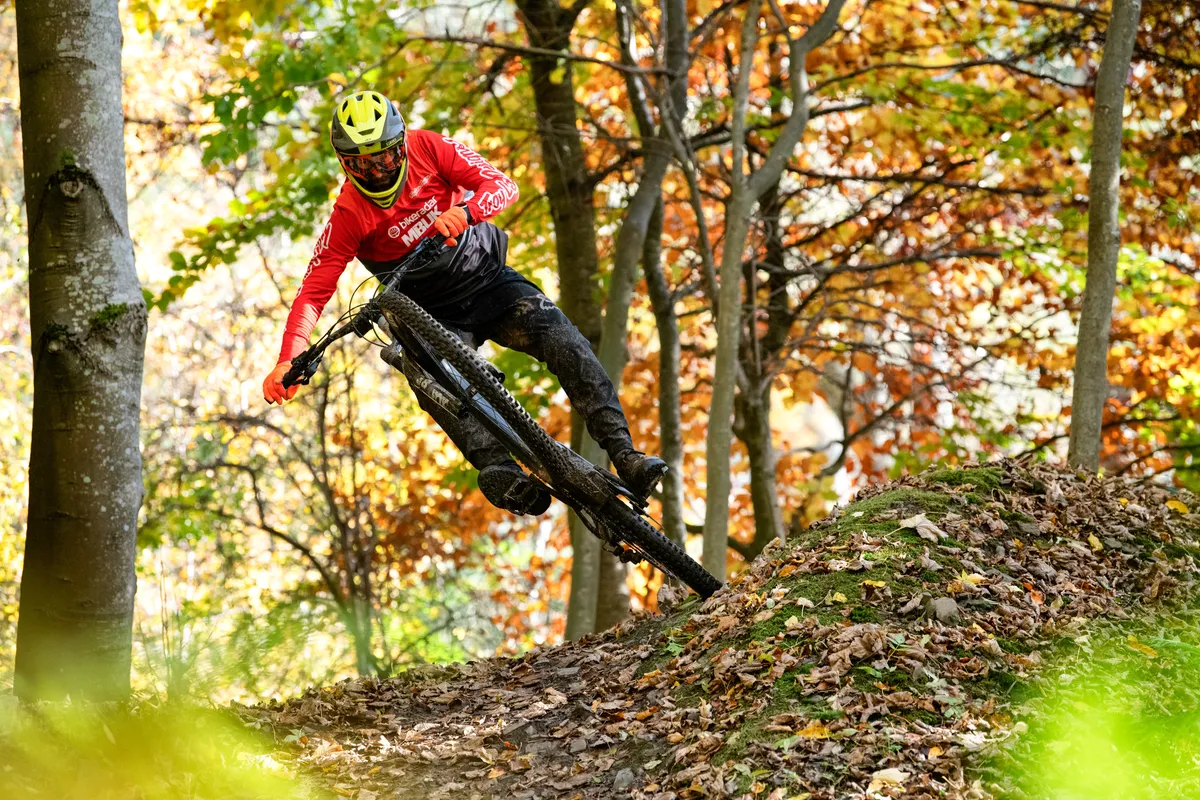
I took to my home trails in Scotland’s Tweed Valley over a period of four weeks to put the Alpine Trail E2 through its paces, taking in a range of terrain from trail centre blue routes right the way through to full-on downhill runs.
Setup was relatively straight forward. I put 98psi in the forks with all high- and low-speed rebound and compression adjustment fully open. I fitted a 450lb spring to the rear shock and left the low-speed rebound and compression adjusters fully open.
I found the suspension's rebound damping didn't feel too fast when set to fully open, and when it was slower it had a tendency to pack down slightly.
Equally, I preferred to rely on spring rates to give compression support rather than dialling in more compression damping which, when increased, sometimes made the forks feel like they were choking on successive hits.
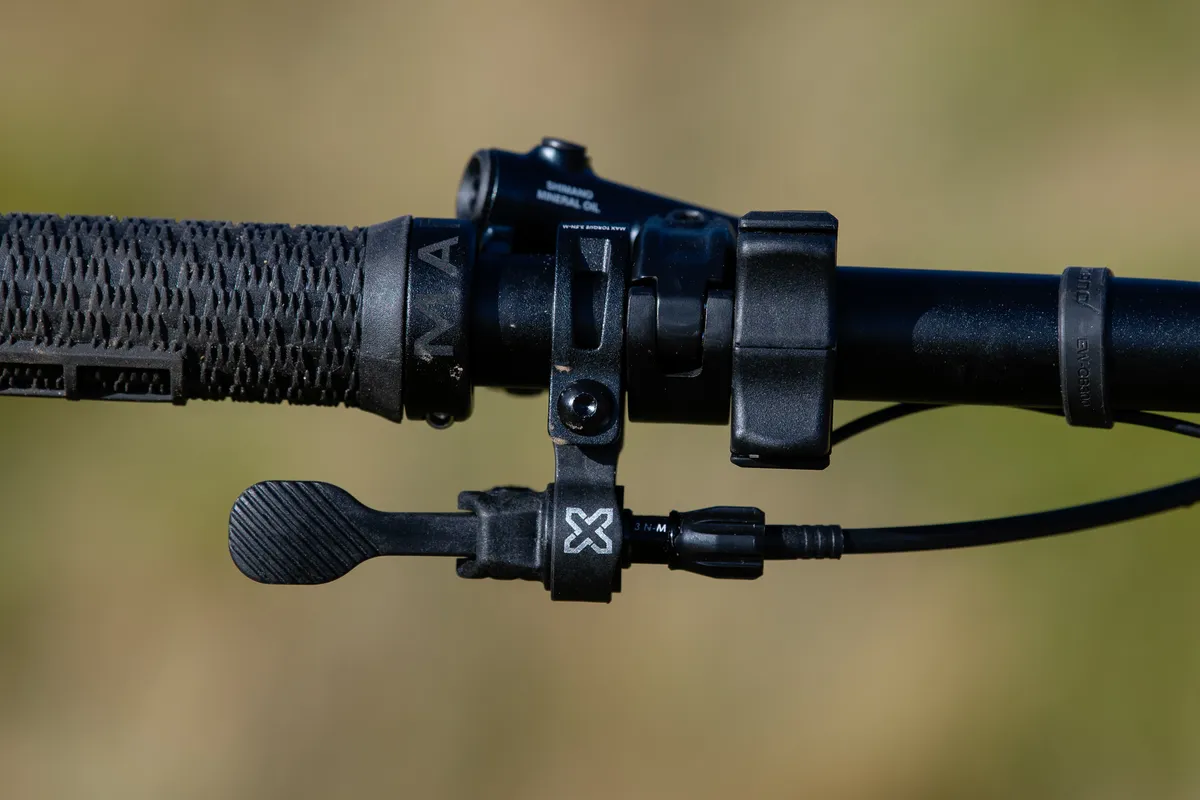
I struggled to get the left-hand brake lever, dropper post remote and STEPS mode controller in the perfect position because Shimano’s brake levers limit the clamping space between the grip and bar, meaning there's not enough room for both the mode selector and dropper remote.
I compromised by positioning the STEPS mode buttons inboard of the brake lever and the dropper remote between the grips and brakes. Using Shimano’s I-Spec system for the dropper remote would help rectify this problem.
Marin Alpine Trail E2 climbing performance
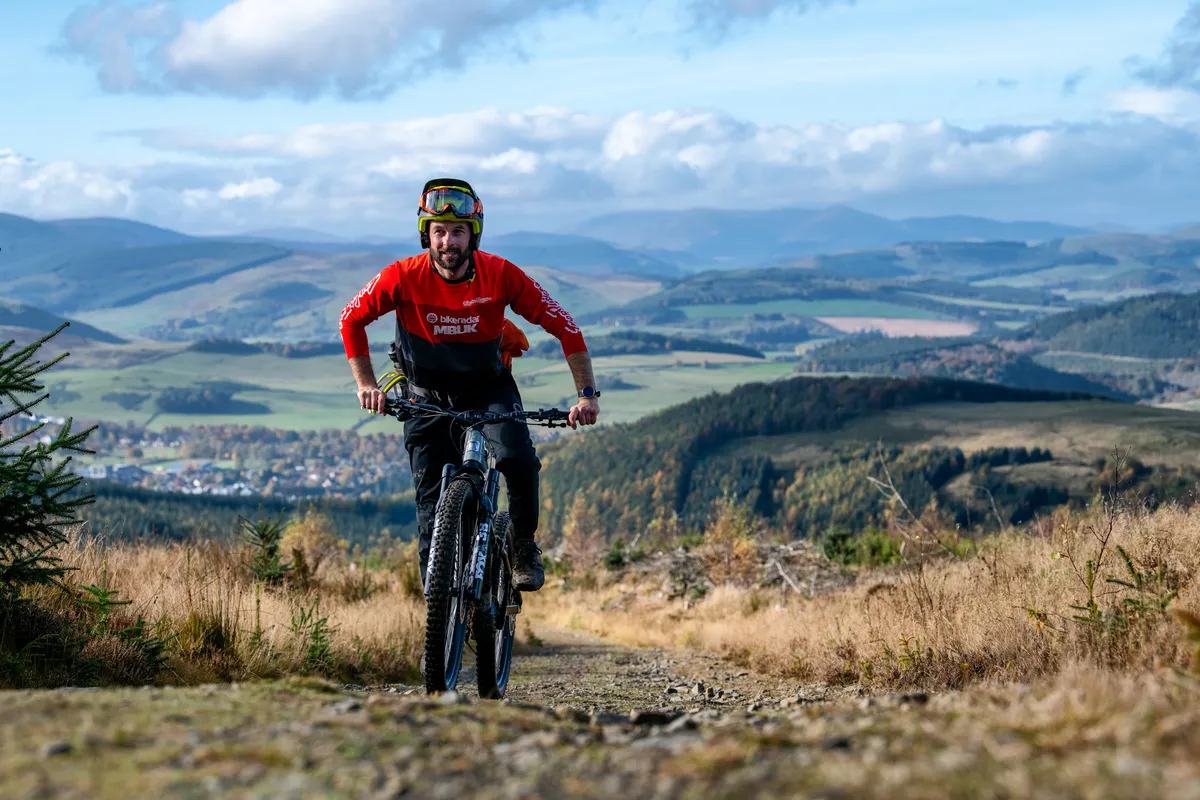
Tackling the ascents, the Marin proved to be especially comfortable with a relaxed, upright and centralised seated pedalling position. This meant I didn’t have to constantly shift my weight further and further forwards on the saddle and fight the bike in order to be comfortable.
There was no undue pressure put through my arms and hands on flatter transition sections during long days on the bike, which helped limit fatigue and permitted me to concentrate my energy into the more technical aspects of my rides.
Coupled with the comfort, the bike’s geometry also made ascents feel calm and controlled, where larger inputs were required to get the bike to move in the desired direction. I also found I wasn’t having to lower my chin towards the stem to tackle particularly steep climbs, despite the relatively short chainstays.
Arguably, longer stays would further improve the Alpine Trail E’s ability to climb, but as they were, they weren’t holding it back.
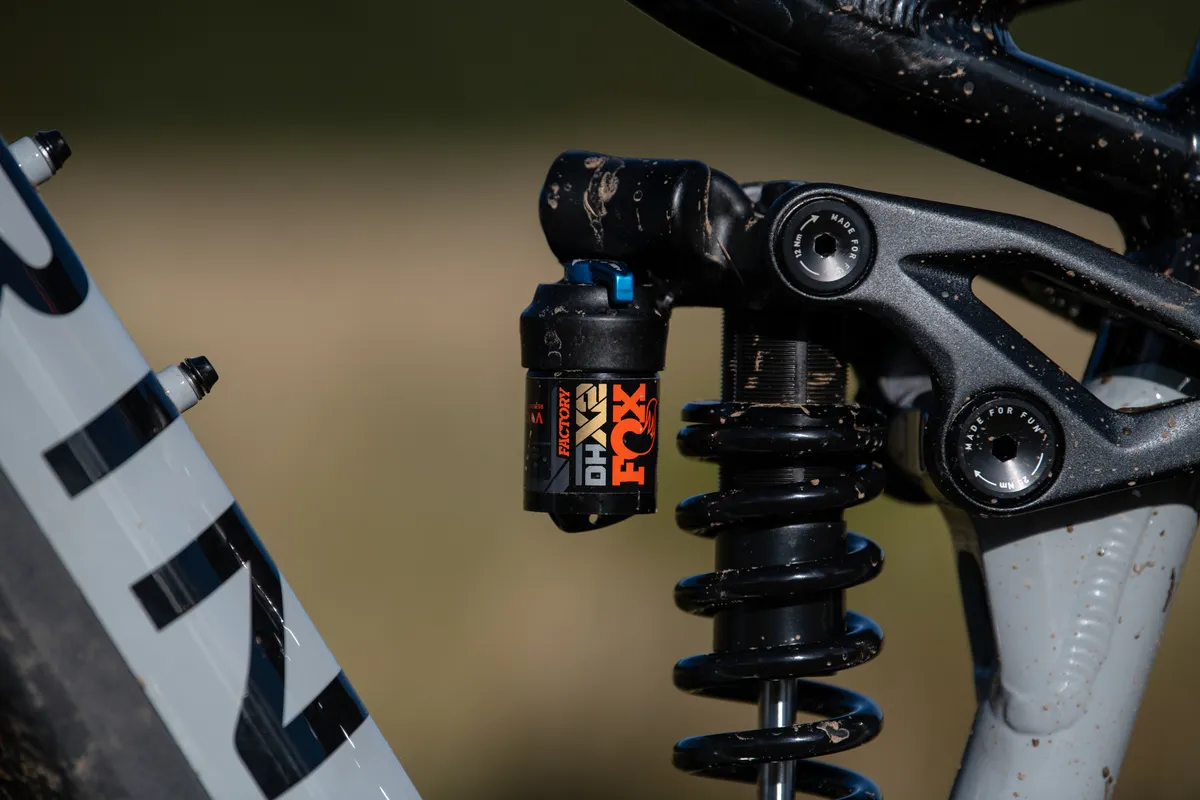
Suspension comfort on the Alpine Trail E was exceptional thanks to the hyper-smooth and active rear shock that absorbed every ripple and bump it encountered. Because you spend plenty of time seated while pedalling on an ebike, seated comfort is essential and the Alpine Trail E didn’t disappoint.
Along with ensuring smoothness, it also improved rear wheel grip on the climbs because the rear wheel moved predictably up and out of the way of bumps and steps.
The downside to this was pedal bob, but the EP8 motor did more than enough to counter any power losses to shock movement.
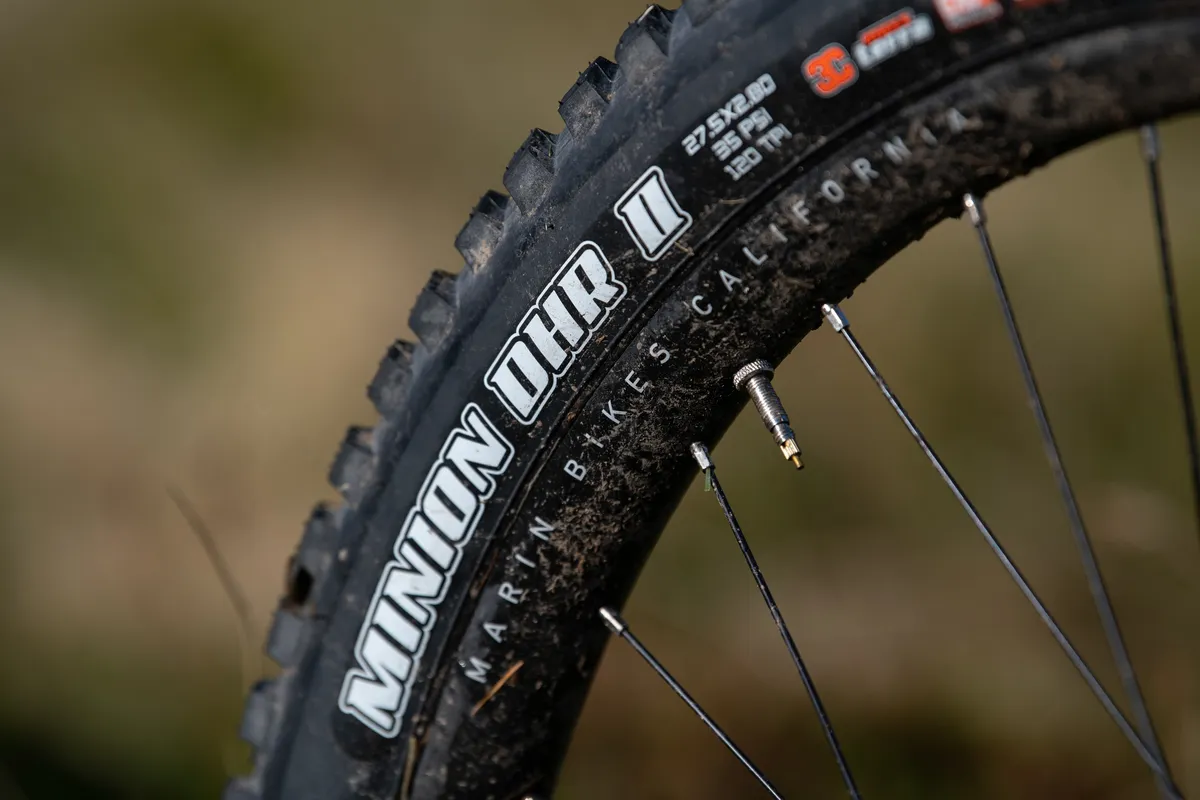
The large 2.8in wide rear tyre gripped well on dry to damp terrain, even when the ground was soft. However, once it got boggy or muddy, it was unable to penetrate the terrain’s surface and span up quite easily, clogging tread.
There are plenty of scenarios where a wide rear tyre works, but an equal number where it’s less suited, and if I had a choice, I’d change it out for a thinner 2.5in or 2.6in version to suit my preferences better.
Marin’s E-MTB saddle was comfortable, even after long and arduous rides, but I wasn’t especially keen on the grips, finding their compound hard.
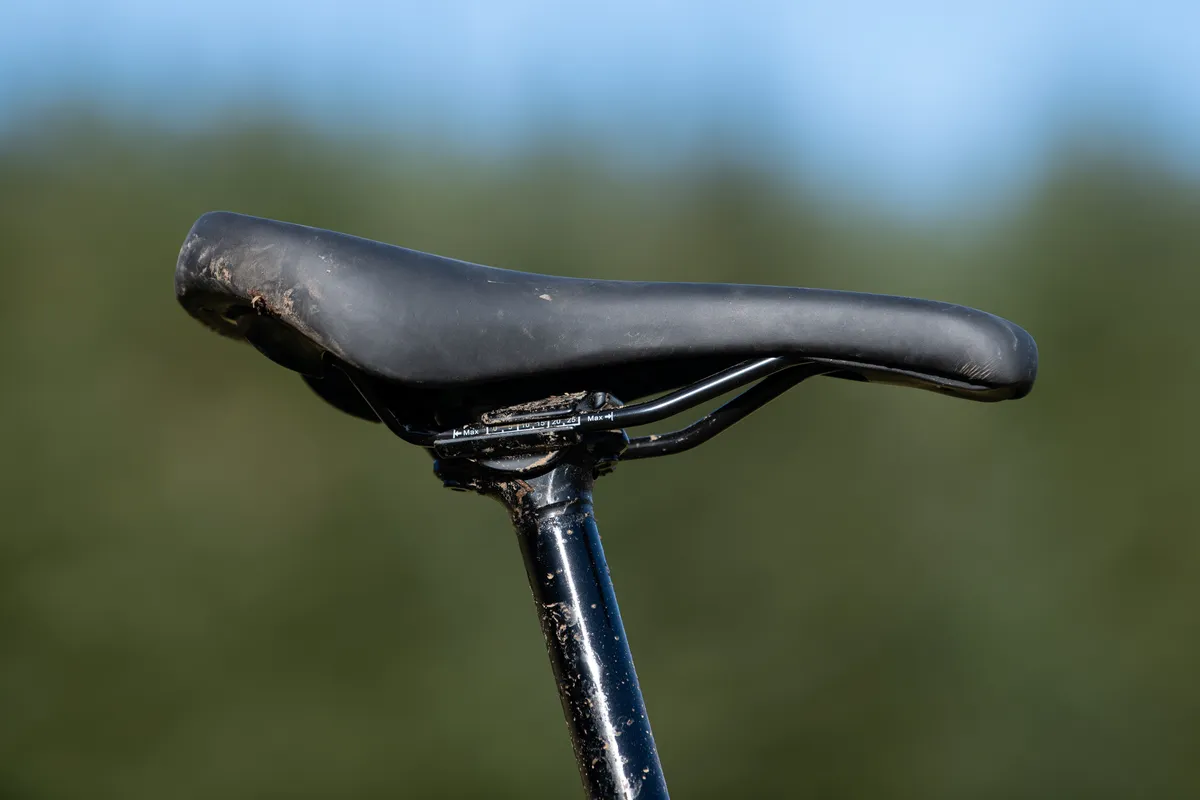
After tuning the EP8 motor’s assistance levels to their maximum for each mode in the E-TUBE Project app, I found myself using Eco the most especially when climbs were steep or technical.
Eco delivered the most predictable, consistent and controllable levels of torque and power, and although it did require more rider input and effort, I found the extra control created reduced fatigue and the need to fight the bike to keep the front wheel down and on the correct line.
Marin Alpine Trail E2 descending performance
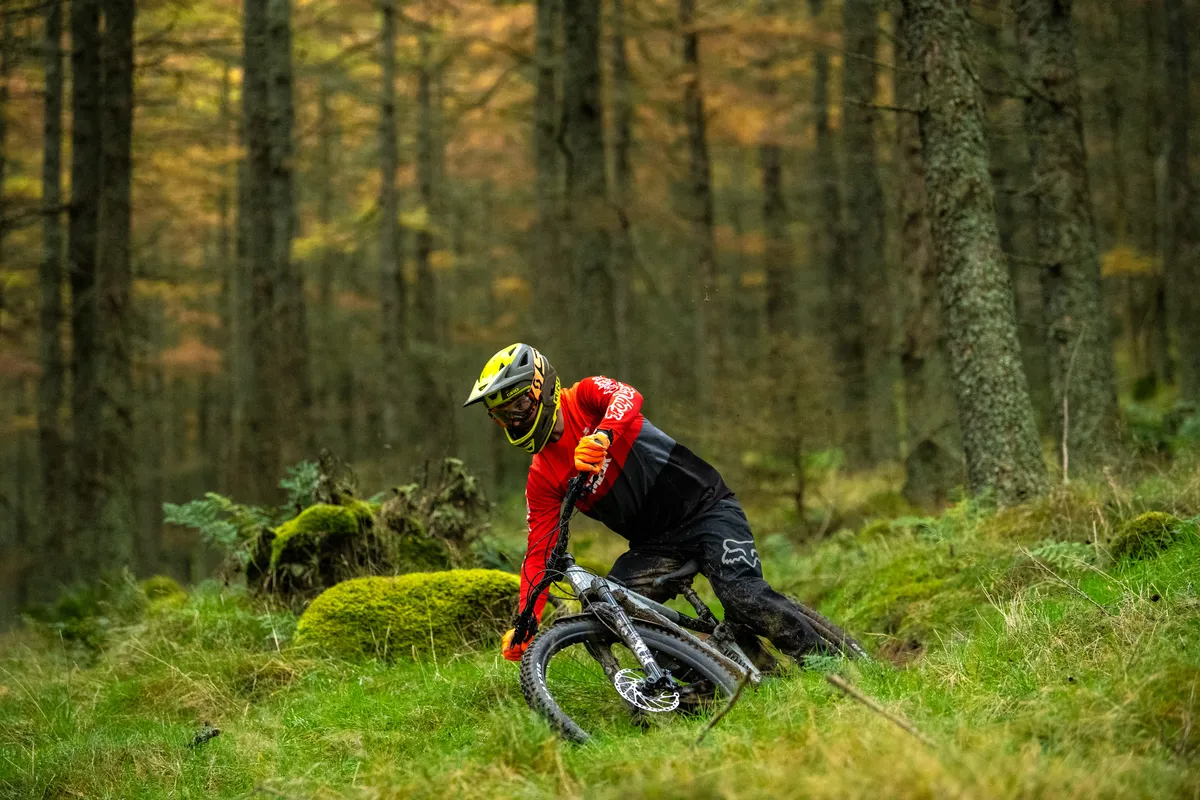
Pointing the Alpine Trail E2 downhill revealed an impressively capable chassis, with its rear suspension proving to be supple and responsive, ironing out the trail’s imperfections well. This meant it maintained speed though bumpy chunder and helped create a calm and composed ride.
Most impressively, not only was the rear-end supple, it also ramped up on bigger hits. Compressions, jumps, drop offs and bermed turns didn’t result in a wallowy floundering felling the Alpine Trail E2, like some less supportive bikes have.
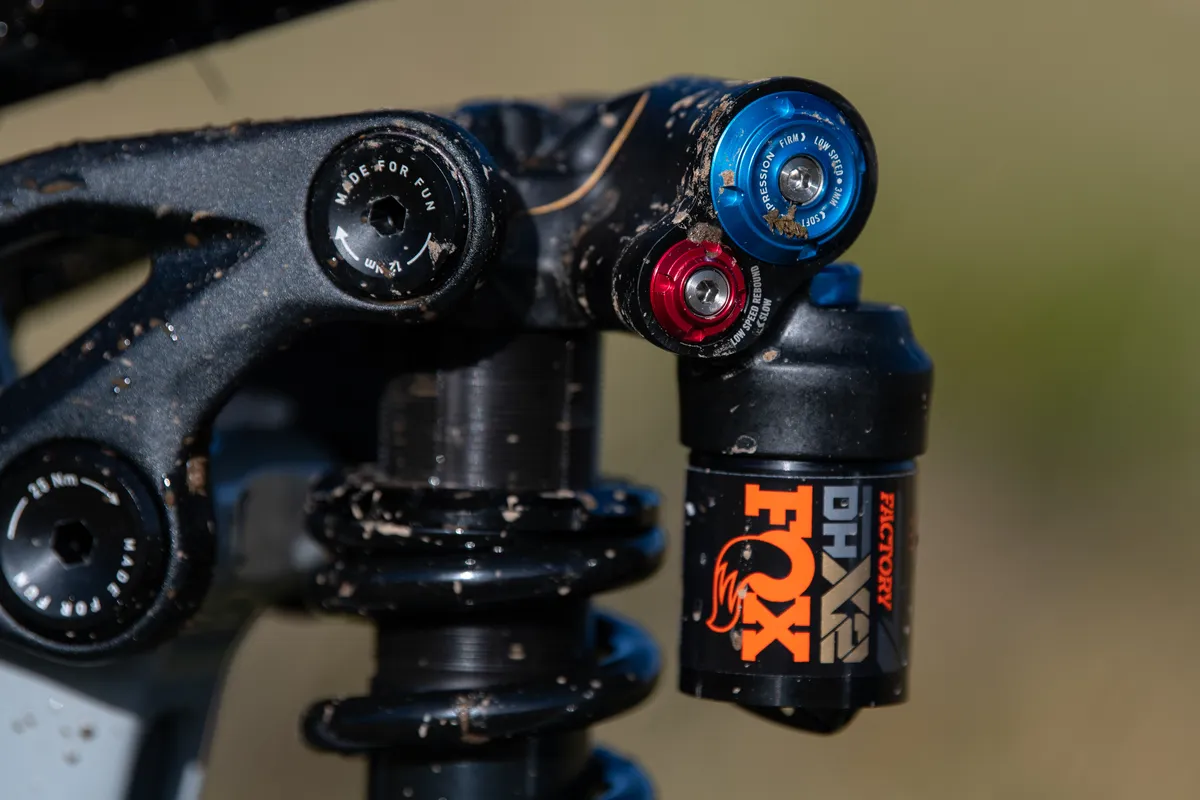
During the testing period I didn’t feel it bottom-out harshly or blow through its travel in an uncontrolled way. Marin’s managed to strike the perfect balance between compliance and resistance, hitting the sweet-spot of ebike suspension on its first attempt – and that’s quite some praise.
The rear tyre didn’t suit my preferences or riding style on the descents, though. Because the 2.8in width is only available in EXO+ casing, I found I had to run higher pressures than usual to protect against punctures. Harder pressures in wider tyres negate the advantages of the additional grip provided by the wide rubber when it’s soft.
I found the rear tyre’s carcass required nannying through rocky sections to avoid punctures and the EXO+ casing would deform and squirm when pushed hard through turns.
Inflating it to beyond 30psi mitigated against these problems, but a DoubleDown or equivalent would be the preferred solution.
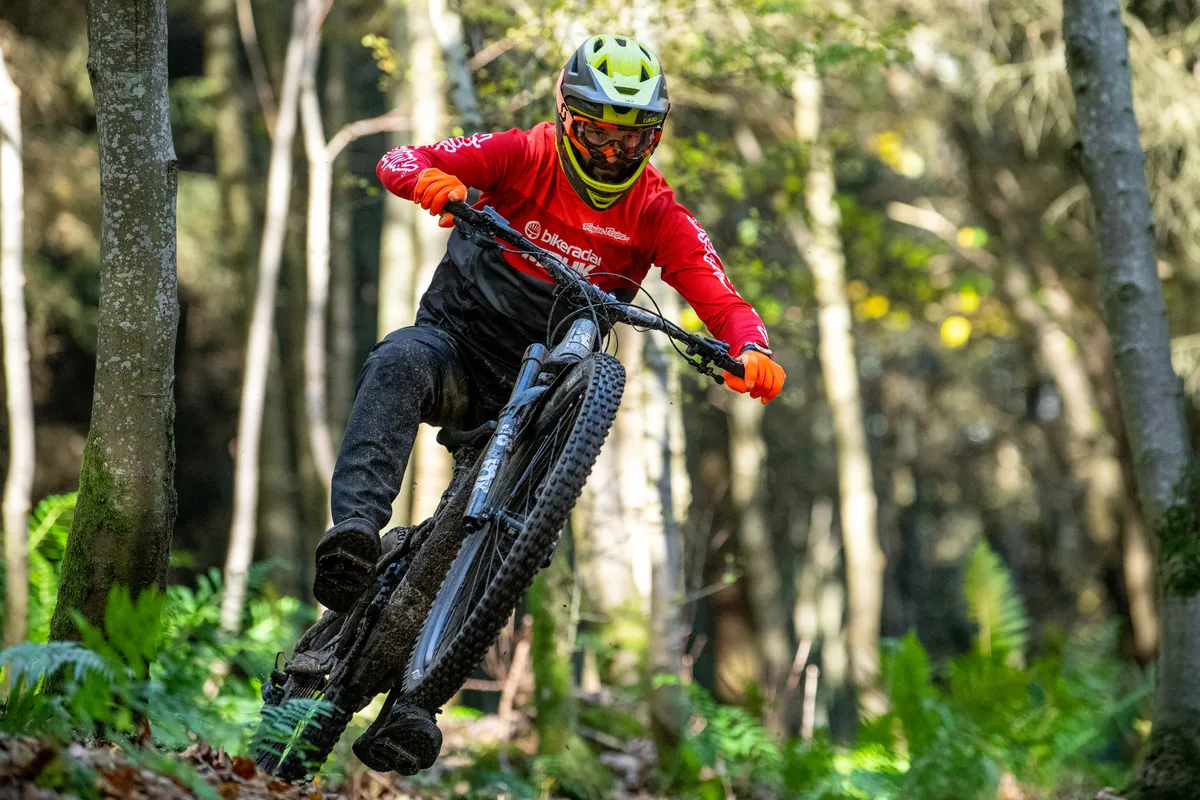
Thanks to the higher pressures, the rear-end was keen to drift around turns more than it gripped. However, the DHR II tread is predictable and easy to control in a drift, making the oversteer-happy rear-end fun to ride rather than a handful. However, a tyre is easy and relatively cheap to change, so don’t let it put you off.
Its geometry felt well balanced on the descents, the bike not easily upset by bumps, rocks and roots – weight surely helping here, too. This inspired confidence and the Alpine Trail E2 really shone when the trails got particularly fast and rough.
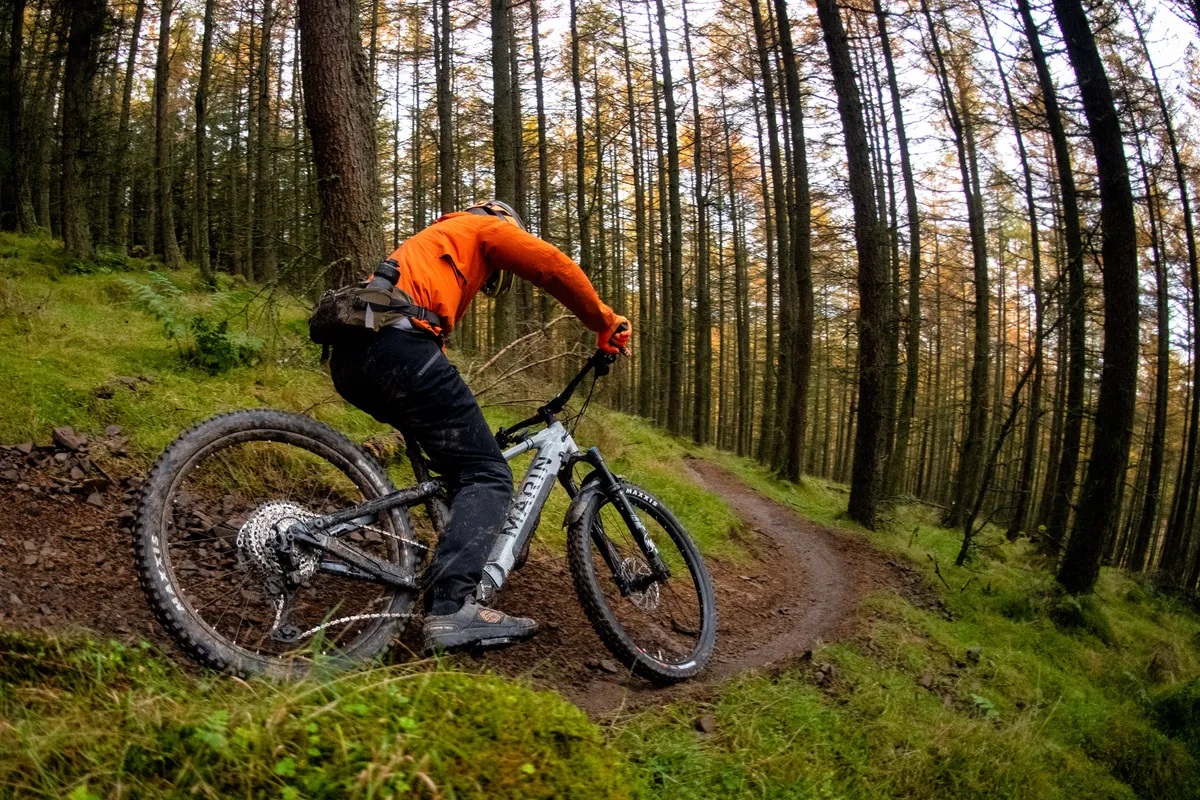
That same weight initially made tighter sections a bit of a handful, but once accustomed to the heft, earlier, deliberate weight shifts made the twisty bits less of a struggle. Once the Marin was committed to a turn or line, there was no stopping it.
And thanks to the slack head-tube angle and well-damped fork, the front-end didn’t bog down when the trails got steeper.
The bike’s overall weight was easier to keep in check on steep steps because it didn’t overload the front wheel, which helped me pick lines and commit to riding quicker.
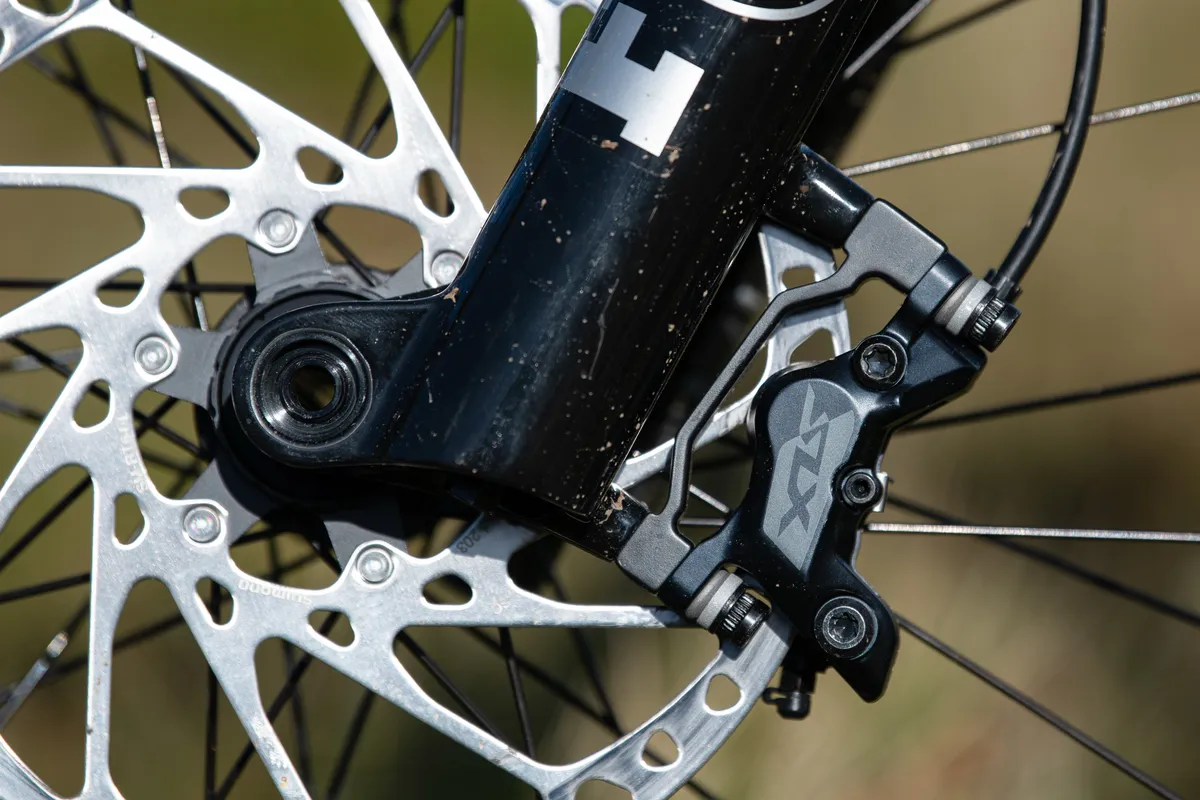
Similarly, the Shimano SLX brakes performed well on the steeps – although they did suffer for the well-documented wandering bite point issue – providing plenty of power and modulation, and refused to overheat or become spongy even after prolonged periods of braking.
Marin Alpine Trail E2 bottom line
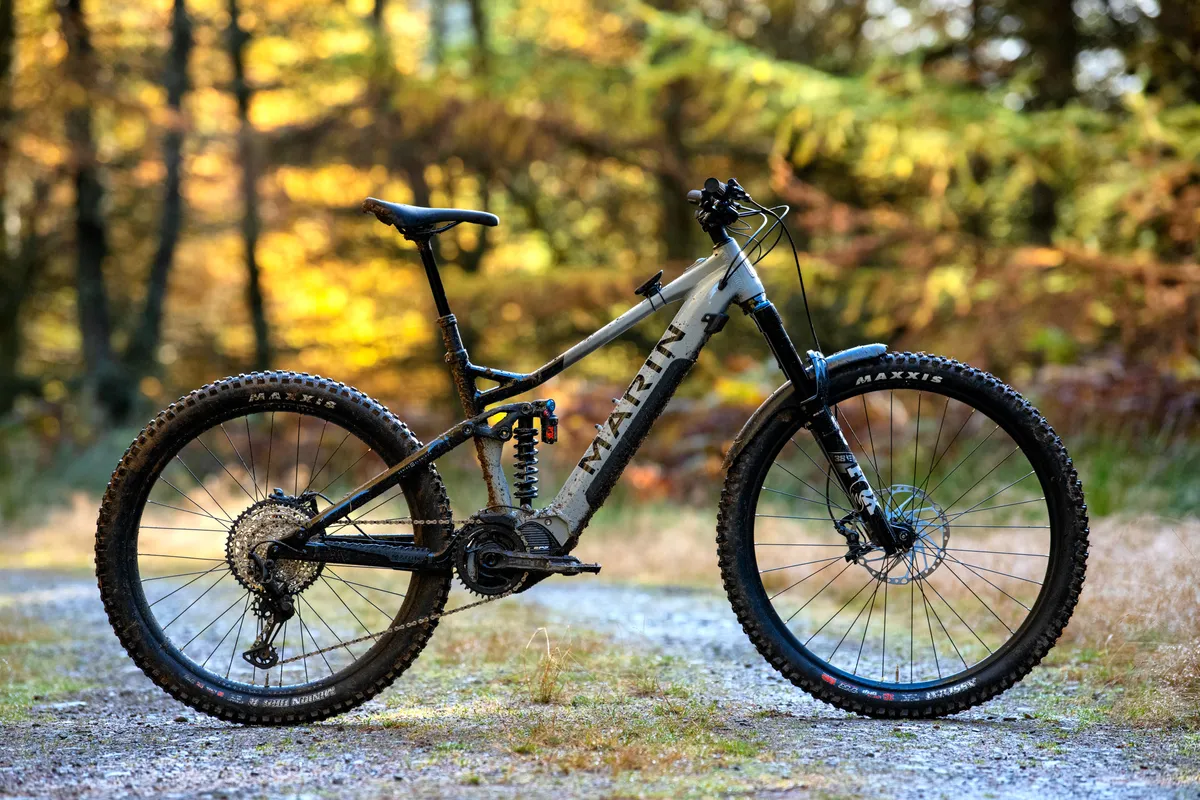
It would be unfair to say Marin has stumbled upon the near-perfect formula for its first full-suspension ebike because it's clearly thought long and hard about every detail. And while I may not agree with the rear tyre choice – I’d personally fit a thicker casing model – it certainly wasn’t deal-breaking and might suit plenty of people.
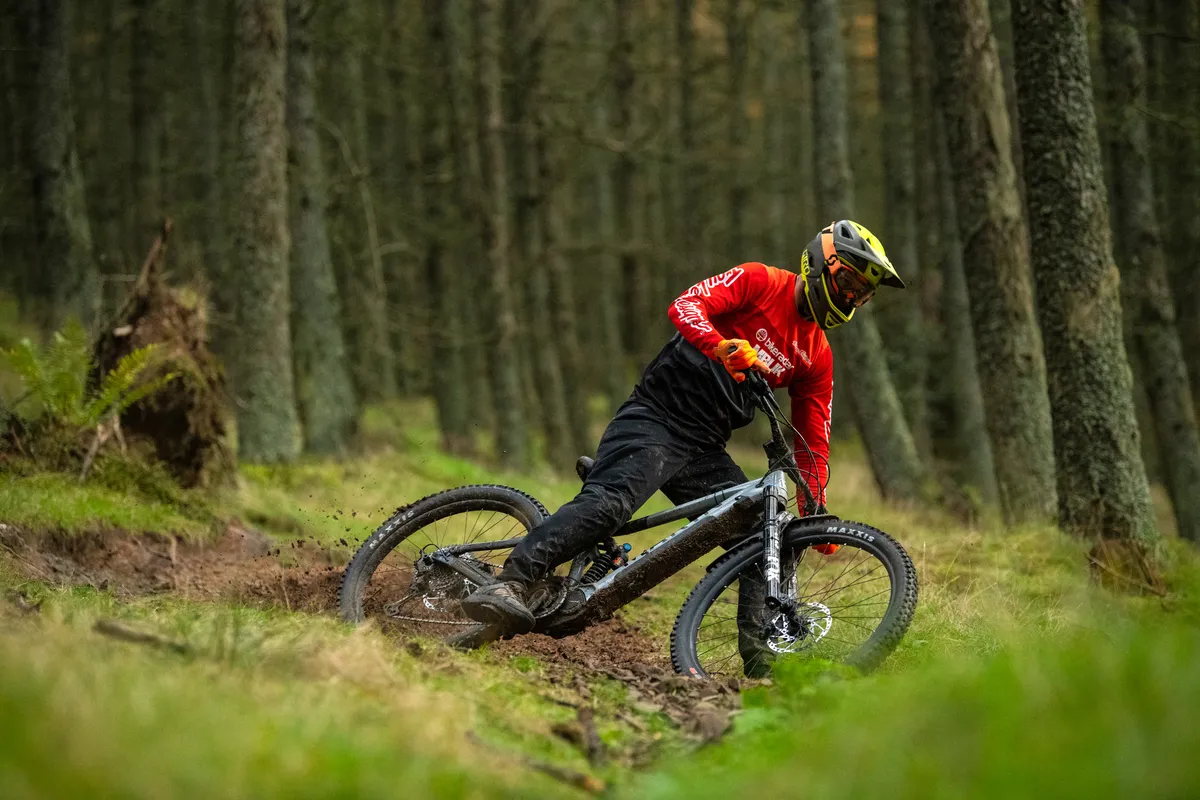
But the rest of the bike represents some of the best performance for the money you can get; top-spec dampers, Shimano drivetrains and branded components – nearly throughout – are coupled with fantastically modern and truly rideable geometry, culminating in a fun, capable yet affordable ebike that’s at home on a broad spectrum of trails.
Product
| Brand | marin |
| Price | 6199.00 EUR,5695.00 GBP,5999.00 USD |
| br_whatWeTested | Marin Alpine Trail E2 |
| Weight | 23.3000, GRAM (Large) - Size large, without pedals |
Features
| Fork | Fox 38 Performance Elite GRIP2 |
| br_stem | Deity Copperhead |
| br_chain | KMC E12S |
| br_frame | Marin Alpine Trail E |
| br_motor | Shimano STEPS EP8 |
| Tyres | Assegai 29x2.5in 3C MaxxTerra EXO+ (f), Minion DHR II 27.5x2.8in 3C MaxxTerra EXO+ (r) |
| br_brakes | Shimano SLX 4-piston with 203mm rotors front and rear |
| br_cranks | E.13 e*Spec 165mm |
| br_saddle | Marin E-MTB |
| br_wheels | Marin Aluminium Double Wall 29in, 32mm width rim on Forged Alloy hub (f), Marin Aluminium Double Wall 27.5in, 38mm width rim on Shimano HB-MT400B hub (r) |
| br_headset | FSA |
| br_shifter | Shimano SLX |
| br_cassette | Shimano SLX |
| br_seatpost | X-Fusion Manic |
| br_gripsTape | Marin single clamp lock-on |
| br_handlebar | Deity Ridgeline |
| br_rearShock | Fox DHX2 Performance Elite |
| br_bottomBracket | Shimano STEPS EP8 |
| br_availableSizes | Small, medium, large, extra-large |
| br_rearDerailleur | Shimano Deore XT |
| br_frontDerailleur | E.13 Plus |
